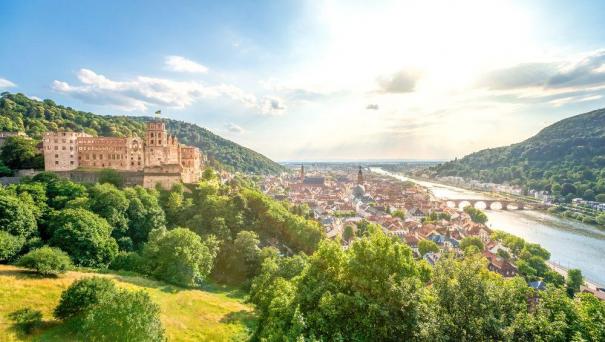About Heidelberg
Heidelberg is a town on the Neckar River in southwestern Germany, known for its distinguished 14th-century university. Built, destroyed and partially restored over several centuries, red-sandstone Heidelberg Castle stands beside the river on Königstuhl hill. Visitors can ride the Bergbahn funicular to reach the castle and its gardens, which have sweeping views over the river and the baroque Altstadt (Old Town). The warmest month in Heidleberg is in July, the coldest in January. Temperatures often rise beyond 30 °C (86 °F) in midsummer. In the 5th century BCE, a Celtic fortress of refuge and place of worship were built on the Heiligenberg, or "Mountain of Saints". Both places can still be identified. Modern Heidelberg can trace its beginnings to the fifth century. The village Bergheim ("Mountain Home") is first mentioned for that period in documents dated to 769 AD. Bergheim now lies in the middle of modern Heidelberg. Among the most prominent museums of Heidelberg is the Carl Bosch Museum which shows life and work of chemist and Nobel Prize-winner Carl Bosch. In 2011, over 149,000 people lived in the city.
